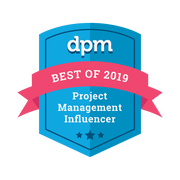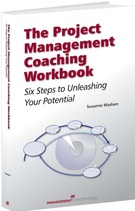Working effectively on a project, interacting with stakeholders and leading the team to deliver the best outcomes, require hundreds if not thousands of conversations. Not all of these conversations are going to be easy or pleasant. Customer expectations need to be managed and the team needs to find its feet. Many heated conversations may be had about scope, quality, timelines, budget, resources, solutions, tools and methods. In addition, team members represent diverse cultures, values and languages. They have different ways of working and diverse ways of solving problems. Negotiating a way forward, giving feedback and delivering bad news is often necessary, but not easy.
Think of a conversation that you typically find challenging. When you examine it you will probably find that 1) There is a lot at stake. 2) There are opposing opinions. 3) There are strong emotions on one or both sides. For example, if you need to tell your client that you’ve hit a major roadblock and that the project will be delayed, it will turn out to be a challenging conversation – especially if your client has a strong emotional reaction and suggests a solution that you know isn’t possible.
The types of conversations that I personally find challenging is when I need to say no to a piece of work for an important client. I feel that there is a lot at stake because I’m worried about damaging the relationship. That also means that I’m likely to go into the conversations with strong emotions rooted in fear. I’m unsure how my client will react and I’m worried they will try to put pressure on me or think less of me.
The emotional component
The emotional component is one of the most important aspects to examine as it’s often the key to navigating and unlocking a challenging conversation. It turns out that we humans aren’t as rational and logical as we would like to think. A large part of our behaviour is influenced by emotions that we’re not aware of. In situations where we get emotionally triggered, a fight, flight or freeze reaction is activated in our mind and body. When our emotional brain kicks in it’s essentially trying to protect us and prepare us for danger. The heart beats faster, our breathing speeds up, blood rushes to the muscles and our focus narrows.
This automatic reaction is great when we’re in physical danger, but in a conversation it’s more likely to hinder than help. When we get emotionally triggered, the brain’s focus is diverted from the prefrontal cortex, which is responsible for decision making and complex cognitive behaviour, towards the emotional brain. In other words, when we become overly emotional, we lose the ability to think clearly, to make rational decisions and to draw conclusions. Unfortunately, we’re often emotionally triggered even before a conversation begins. We’re angry because a team member hasn’t delivered what he or she promised. Or we’re worried because our boss wants to talk to us about yet another project to be added to our plate.
Our emotions aren't wrong. They are justified and serve the purpose of keeping us safe. But if we’re not able to manage them effectively, they will narrow our focus and prevent us from having an open-minded conversation and getting to the root of a problem. They might even influence us not to give feedback to someone even if we have a great deal to say. We simply avoid or delay the conversation because we find it too unpleasant. We’re worried that if we fully show up, speak our truth, or put our demands on the table, we will be rejected or criticized. But when difficult topics aren’t openly discussed they will mushroom under the surface. That can cause dysfunctional team behaviour, where sarcastic comments are made but never fully explored.
Let's examine four tips that will help you prepare for and conduct challenging conversations.
1. Build self-awareness. Becoming aware of the conversations you tend to find most challenging, understanding why that is and how you usually react is the most fundamental step. That’s because you can only really change a pattern or a behaviour that you are aware of. Set aside some time to reflect on your current and past projects in a place where you will not be interrupted. What are the types of conversations that are the most challenging for you? In which situations do they typically arise? What makes them challenging? How do you feel entering into them (angry, afraid, sad)? How do they usually unfold? What are some of your typical behavioural patterns? Do you for instance tend to get defensive, competitive or aggressive? Or do you become avoidant or compliant? Is it easy or difficult for you to express your thoughts, feelings and needs during a conversation? Do you welcome challenging conversations or not at all? Be as objective and non-judgemental as you can. Simply write down your observations and see if you can identify a few of the traps that you usually fall into.
2. Prepare for the conversation. We sometimes expect that we should be able to navigate a complex conversation on the fly without any preparation. As a result, we don’t always get to say what we really wanted to and end up beating ourselves up for having omitted an important point or not expressed our real need. Proper preparation cannot be underestimated. In the leadership programmes I run, the participants are asked to experiment and practice challenging conversations with actors. The actors, who are excellent at triggering our participants, might for instance play an angry client or an underperforming team member. Over time the participants learn what to watch out for and they always emphasise how much they learn from the prep-time we give them before getting into action.
So, set aside time to prepare and to think through why you are having the conversation, what you perceive the problem to be and what your preferred outcome is. How would you like your working relationship with your counterpart to be and what kind of mindset would you like to show up with? Also think about what the facts and tangible examples are that you want to present to your counterpart. Then, turn the tables and consider how the other person sees the problem and what they might want from the conversation. What are their underlying needs and what is their emotional state likely to be? By considering what your counterpart’s perspective is you will be more perceptive during the conversation and less likely to be caught off guard.
3. Seek first to understand, then to be understood. As Dr Stephen Covey said, “Most people do not listen with the intent to understand; they listen with the intent to reply”. If you enter the conversation with an agenda to first be understood and to get your points across, the effectiveness of the conversation will be limited and you might end up arguing who is right and who is wrong. An open and curious attitude, where you suspend your judgements as much as possible, listen, and ask lots of open questions, will get you much further. Even if you have a preferred outcome in mind, the goal of the conversation should be to collaborate and to openly discuss the issue before a conclusion is reached.
Don’t feel you have to have the entire solution thought through in advance. That leaves little room for collaboration. You can also improve the atmosphere by speaking in person and by sitting down rather than standing up. It’s more grounding. When it’s your turn to express your viewpoint, be honest and name the real issue. Don’t minimise it. You have to agree what the problem is before you can solve it. Be mindful however not to get confrontational, accusatory or to speak down to the other person. That undermines the entire process. Speak the truth as cleanly as you can by explaining how you see the issue, how it makes you feel and which potential solutions you see.
4. Respond rather than react. As previously discussed, it’s important that you keep your emotions in check during the conversation as they may otherwise highjack and derail you. If the conversation goes as smoothly as you have planned, staying calm and clear-headed will be easy enough. It’s much more difficult if your counterpart throws in a wildcard, starts to accuse you of something or in other ways makes you feel uncomfortable. If that happens just stay quiet for a moment. Breathe as deeply and slowly as you can and relax your body, as that’s the way to slow down your heart rate and stay connected to the rational part of your brain. The goal in any conversation is to consciously respond to what is being said rather than lashing out based on a kneejerk reaction. Don’t let yourself get provoked.
When our participants practice having challenge conversations with actors, they experience time after time how powerful silence can be. Five seconds of silence may feel like an eternity. But it works! Not only does it send a strong message to your counterpart, it’s also an effective way to help you manage your own emotions. If your counterpart’s behaviour is unacceptable, for instance if they belittle you, then you need to call it out and express how you are experiencing their behaviour. Not that easy, but necessary.
If you liked this post, you may also like:
How to have bigger impact by deepening your project communication
Become a better communicator with DISC profiling
Top Tips for Providing Effective Feedback
How to create a strong team identity during kick-off









 RSS Feed
RSS Feed